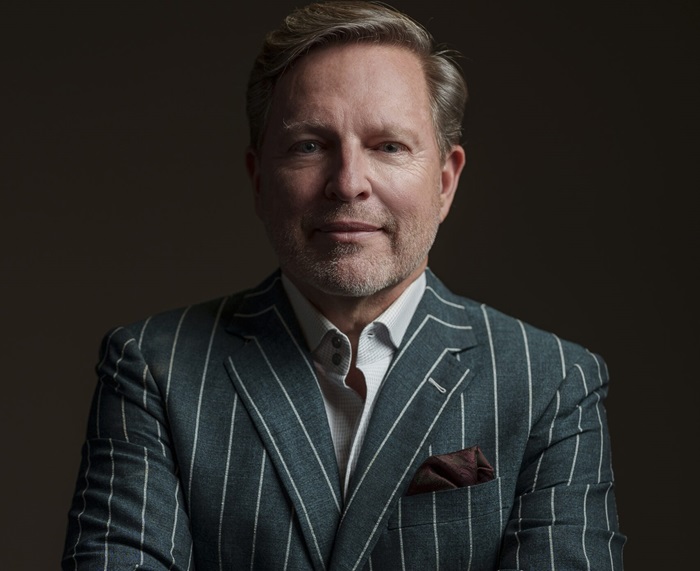Think ‘Fairness, Not Sameness’ When It Comes to Compensation
By Verne Harnish | September 26, 2024 11:00 am
‘There is nothing more unequal than the equal treatment of unequals!’ exclaims Scaling Up and EO founder.

Does everyone on the same sports team, in the same position, earn the same pay? Often, the difference between the compensation of the starter and second string can be measured in orders of magnitude, depending on their performance. This seems reasonable, so why not the same in business?
Many companies haven’t thought along those lines historically, but with middle managers being stripped out of organizations, there aren’t the vertical promotions available that have traditionally led to significant pay increases — and many are looking for new ways to build compensation systems that are fair and equitable and not demotivating. Providing your team members with ways to gain promotions within their job, based on their performance, is the goal.
TMC’s Compensation System
It was budget season again and time for the People Council at TMC, a teleradiology provider headquartered in Barcelona, Spain, to come together for the company’s annual salary review. The People Council was a subcommittee of the senior leadership team. One of its tasks was reviewing the fairness and adequacy of TMC’s compensation system once a year.
Over the years, TMC had developed a quite elaborate scheme to pay its now more than 300 medical doctors fairly and attractively. However, compensation for the now 130-people-strong medical staff had evolved organically over the years without much structure. People had been hired in a decentralized manner, with suggestions for the compensation package coming from the hiring department. Within a department, managers made sure that salaries were more or less coherent, but there was no way of comparing compensation across departments.
“I feel we generally pay people fairly but very differently, and I don’t always have good arguments to justify the differences in salary and bonuses across the firm,” noted Alexander Boehmcker, TMC’s CEO between 2009 and 2019, during a meeting.
As a result, the compensation system had left the team grappling with a number of unanswered questions: Is it equitable to pay a 27-year-old software developer twice the money his 45-year-old colleague in Operations makes? Is it okay that a senior AI expert with no people responsibility makes more than a mid-level manager with a team of 30? Is it okay for the top sales rep to make more than her boss when the alternative is losing her to the competition? Should C-level executives who joined recently still receive a piece of the equity?
Cleaning Up the “Comp Mess”
With 350 employees by 2018, the leadership team at TMC saw it was the ideal moment to clean up the historic “comp mess” and implement a system that deserved the name.
As they correctly realized, one of the most important decisions you can make in growing your company is what system you’ll use to compensate your team. Many organizations go astray on their hiring, recruitment and retention strategy because they think it is fairest to pay everyone with the same job description the same amount, more or less, within a narrow range.
But fairness doesn’t mean sameness. Performance is not normally distributed evenly and thus pay shouldn’t be, either. It is critical to set base salaries and a formal pay structure, along with job categories/salary levels and pay bands, that create coherence but at the same time also consider large differences in performance.
In an organization that prioritizes its people, external and internal fairness is the most important requirement of any compensation system. Fairness from an external perspective means you don’t want your accountant to find out that accountants in comparable jobs and with comparable performance in other companies earn 50% more than she does. Internal fairness means that the salaries of the colleague in the next cubicle — and also the supervisor and direct reports — have salaries that are equitable in relation to one’s own.
Fairness isn’t only about rewarding people appropriately for their contributions. It also means paying people a living wage — not just a minimum one. Most leaders agree that inequality is a huge problem in the world, but few see that the way they design their compensation systems is at the root of that problem.
Building a Transparent and Equitable Compensation System
TMC was willing to invest time in developing a fair and equitable compensation system that met both these criteria — a decision that positioned it well to scale up. The company’s leaders had soon set to work to design a uniform system of job levels across all departments, assign the existing team members to levels and then define the minimum and maximum salary bands for each category that should be observed by all departments going forward. Their goal was to design a transparent and equitable system that allows for meaningful differences in pay between low, average and top performers.
TMC’s team had actually begun working on this a few years prior in its Operations department. This department receives digitized radiology cases from hospitals in Northern Europe and distributes them to a qualified radiologist.
At that time, Operations was made up of about 35 people across three locations. The need for formal structures had become apparent. Employee surveys had indicated for some time the team’s considerable discontent with low and disparate salaries, a lack of career opportunities and leadership issues.
Five Career Levels
In response to the feedback, the global head of operations had defined five career levels (entry, specialist, expert, team lead and manager); associated each level with a minimum tenure, required task proficiencies and established training needs; and assigned a salary grade to each level. The company also increased the entry-level salary significantly.
The new structure sparked several positive developments. The clearly defined paths facilitated recruitment and reduced turnover. The formal training program improved job knowledge and productivity. Several team members rose through the ranks and today occupy team lead and even management positions.
However, the career path and compensation scheme used in Operations, while successful, couldn’t be applied to the whole company. One reason was the need for separate career paths for managers with direct responsibility for people, and for individual contributors. In addition, the Operations scheme didn’t accommodate for more senior individual contributors. Several TMC departments employed highly experienced and well-paid experts who wanted to advance their profession but had neither the intention nor qualifications to manage people. They needed a separate career advancement and compensation plan.
Ultimately, as TMC grew to 430 people, it was able to resolve these challenges thanks to its commitment to fairness, not sameness. The new pay structure TMC designed was based on what, in HR-speak, is known as job analysis and job evaluation. The team looked at all non-medical jobs, described the roles and then assigned them to distinct levels.
Quickly, it became clear that the analysis needed to focus more on the person than the job. Rapid growth was leading to frequent changes in roles, responsibilities, projects and assignments, making it impossible to assess abstract jobs — meaning boxes on an org chart — without looking at the job holder.
Horizontal Promotions
The second thing that became apparent was the team needed to create two separate pay structures and career paths for Leaders (people in individual leadership positions) and Makers (individual contributors). Consequently, TMC designed five separate leadership levels for the Leaders path (coordinator, lead, head/manager, director/executive and CEO). For the Makers path, TMC defined seven levels (trainee, administrator, specialist, pro, ace, wizard and maestro), allowing people to gain horizontal promotions within a job, and make more money, without moving into Leader positions.
Measurable Criteria
The next step consisted of defining the five criteria individuals need to meet to be assigned to a level. TMC included (1) education, (2) experience, (3) training, (4) the time horizon of each person’s work (with the longest horizon tied to the most complex roles that had the biggest impact on overall business results) and (5) the scope of their work, an expression of the “size” of a job.
Then, the TMC team designed a point system that allowed for the scoring of every position against five criteria. The sum of the points then determined to which level someone belonged. For the Leaders path, TMC added a few additional criteria, like their specific objectives and contributions to the long-term viability of the firm. At the end of this process, each of TMC’s team members was mapped to either a Leader or Maker level. And with that, the team delivered what its then-CEO Alexander Boemcker once found lacking — a system based on fairness, not sameness.
While the system took some fine-tuning, TMC realized it didn’t have to be perfected all at once and committed to doing so gradually. Ultimately, the company’s approach to compensation paid off, helping to reinforce its strategy and culture. By November 2017, Switzerland-based Unilabs, Europe’s second-largest diagnostic group, acquired the company at an unusually high multiple for industry standards. Intangibles like strategy, medical and technical talent, software, processes, and the general “strangeness” of the firm’s culture helped it to justify a high acquisition price in the eyes of the new owners.
Ultimately, the way people are treated at work has a far bigger influence on performance than the money you pay them. But the compensation system you design can play a powerful role in showing how much you value your team. Get pay right and out of sight and you won’t have to worry about attracting and keeping the great people you need to continue to realize your vision and scale up successfully.
Verne Harnish is coauthor with Sebastian Ross of Scaling Up Compensation: 5 Design Principles for Turning Your Largest Expense into a Strategic Advantage. He is also founder of global executive education firm Scaling Up and founder of Entrepreneurs’ Organization.




